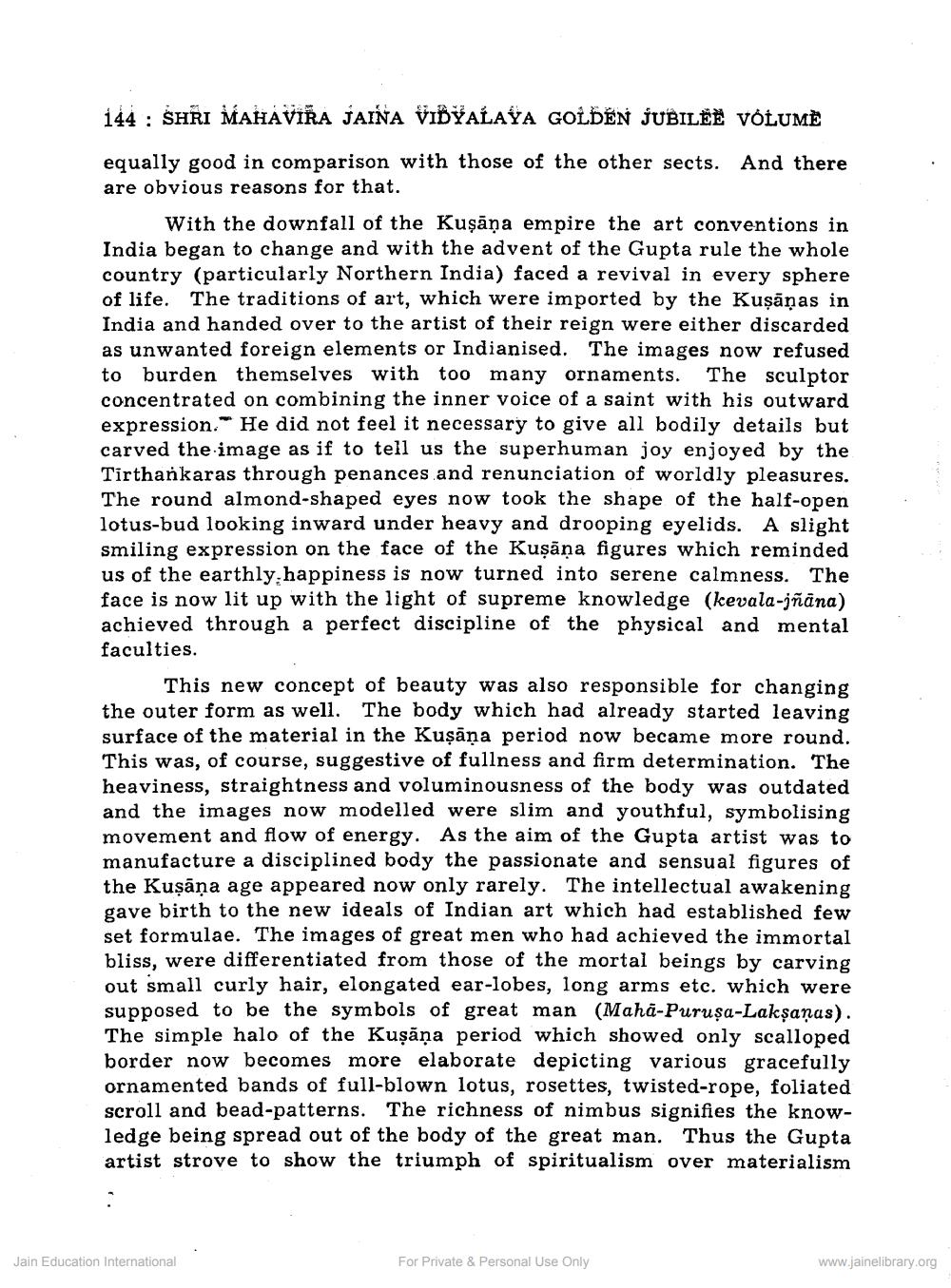________________
144 : SHRI MAHAVIRA JAINA VIDYALAYA GOLDEN JUBILËÈ VOLUMÈ
equally good in comparison with those of the other sects. And there are obvious reasons for that.
With the downfall of the Kuşāņa empire the art conventions in India began to change and with the advent of the Gupta rule the whole country (particularly Northern India) faced a revival in every sphere of life. The traditions of art, which were imported by the Kuşāņas in India and handed over to the artist of their reign were either discarded as unwanted foreign elements or Indianised. The images now refused to burden themselves with too many ornaments. The sculptor concentrated on combining the inner voice of a saint with his outward expression. He did not feel it necessary to give all bodily details but carved the image as if to tell us the superhuman joy enjoyed by the Tirthankaras through penances and renunciation of worldly pleasures. The round almond-shaped eyes now took the shape of the half-open lotus-bud looking inward under heavy and drooping eyelids. A slight smiling expression on the face of the Kuşāņa figures which reminded us of the earthly happiness is now turned into serene calmness. The face is now lit up with the light of supreme knowledge (kevala-jñāna) achieved through a perfect discipline of the physical and mental faculties.
This new concept of beauty was also responsible for changing the outer form as well. The body which had already started leaving surface of the material in the Kuşāņa period now became more round. This was, of course, suggestive of fullness and firm determination. The heaviness, straightness and voluminousness of the body was outdated and the images now modelled were slim and youthful, symbolising movement and flow of energy. As the aim of the Gupta artist was to manufacture a disciplined body the passionate and sensual figures of the Kuşāņa age appeared now only rarely. The intellectual awakening gave birth to the new ideals of Indian art which had established few set formulae. The images of great men who had achieved the immortal bliss, were differentiated from those of the mortal beings by carving out small curly hair, elongated ear-lobes, long arms etc. which were supposed to be the symbols of great man (Maha-Puruşa-Laksaņas). The simple halo of the Kuşāņa period which showed only scalloped border now becomes more elaborate depicting various gracefully ornamented bands of full-blown lotus, rosettes, twisted-rope, foliated scroll and bead patterns. The richness of nimbus signifies the knowledge being spread out of the body of the great man. Thus the Gupta artist strove to show the triumph of spiritualism over materialism
Jain Education International
For Private & Personal Use Only
www.jainelibrary.org




